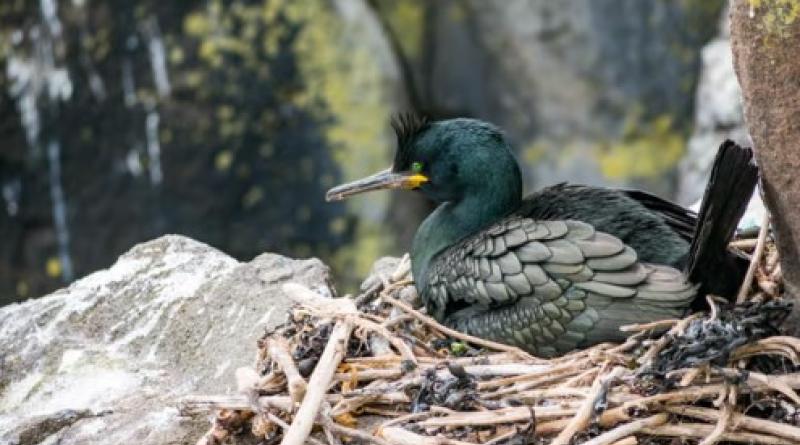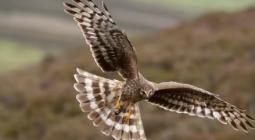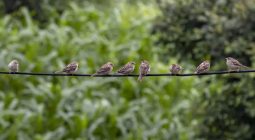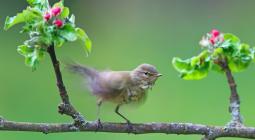‘It was desolation’: why did 700 shags disappear from an island overnight?

Isle of May’s wildlife warden calls it ‘soul-destroying’ to discover birds he ringed as chicks washing up dead on the Scottish coast
For decades, as dusk drew in every evening, up to 700 shags would fly from their foraging grounds near Fife to the Isle of May to roost for the night. Some of the birds had been doing this trip twice a day for 20 years, returning to the same cliff ledge, squabbling over who sat where.
On 31 October, Mark Newell sat on the rock, waiting for their noisy return. He saw nothing. Eventually, 25 exhausted-looking birds straggled back. They did not fly off when he approached. The soundtrack of honking and bickering had stopped.
“It was desolation,” says Newell, who works for the UK Centre for Hydrology & Ecology (UKCEH) as the Isle of May field manager. After working on the island for 20 years, he says: “Seeing the cliffs devoid of birds was a stark, alarming view.”
Newell stayed for four nights, and returned weeks later, but the flocks had disappeared. These birds survived two years of avian flu – which has swept through the UK’s seabird colonies – only to disappear en masse.
Experts say a series of storms in October, culminating in Storm Babet, had caused the disappearance – and likely death – of these birds. But their disappearance could be a microcosm of what is happening on other islands – and a warning of what happens to seabirds as extreme weather events become more frequent.
“There are some birds out there that I’ve ringed as chicks 20 years ago,” says Newell. “A week or two of bad weather and that’s the end of them.”
Records for the island have been kept since the mid-1970s, and there has never been such a heavy loss. “We’ve not seen anything on that scale at any point in the past,” says Newell.
Seabirds can live with occasional stormy weather but successive storms can result in “wrecks”, with hundreds of emaciated seabirds washing ashore. In December 2013 and February 2014, a series of particularly bad storms around the coast of Europe resulted in the death of more than 50,000 seabirds.
The climate crisis is likely to make these events more frequent, and more destructive. Newell says: “It’s usually easier to use shags as the example because we can see the immediate impact, whereas any extreme weather is going to have detrimental impacts on a whole range of seabirds.”
Newell estimates that 10% of the UK population of shags could have been affected by the recent storms because they nest on the UK’s east coast, which took a particularly fierce battering.
Shags feed within a mile of the coast but strong easterly winds stirred up the sea, which meant they could not hunt for days on end. They carry little fat because it reduces their ability to dive, and so die if they do not feed regularly.
“In many cases these birds were of prime breeding age as well, so they should have several years of producing chicks. The fact they are not going to be is pretty heartbreaking,” says Newell.
The Isle of May was also hit by storms in 1993, 2004 and 2012-13. On those occasions approximately half of the isle’s breeding population was lost.
A report published last week found that more than half of the seabird species breeding on British and Irish coasts have declined over the past 20 years. The shag population has fallen by 20% over that period and is now at 20,000 breeding pairs.
In the meantime, conservationists want to find their missing shags. There is a lack of data from other islands, so total losses will not be clear until next breeding season, but anecdotal evidence suggest many have died. Large numbers have been found dead or dying of starvation across the UK.
There have been reports of weak or dead shags around the Scottish east coast, and as far down as Suffolk and Dover in England, with one young bird seen in the Netherlands. UKCEH is calling on people to report and send photos of any dead shags with coloured rings on to shags@ceh.ac.uk.
Hundreds of exhausted shags were found at Fraserburgh harbour in Aberdeenshire; some were rescued, others euthanised.
“It’s pretty soul-destroying,” says Newell. “They’re absent, or in much lower numbers, than they should be for this time of year, so it does seem to be fairly widespread.”
One carcass, found on the Moray coast, was identified by Newell due to its plastic ring. “I knew exactly who it was and where it used to nest,” he says.
Photograph: Sally Anderson/Alamy - A European or common shag (Phalacrocorax aristotelis) nesting on the Isle of May. The colony survived two years of avian flu only to disappear en masse.





